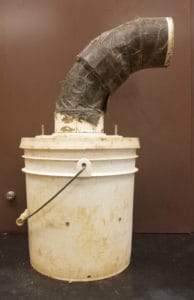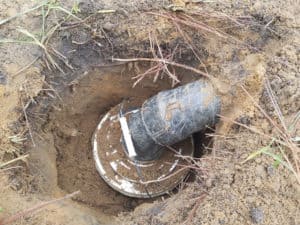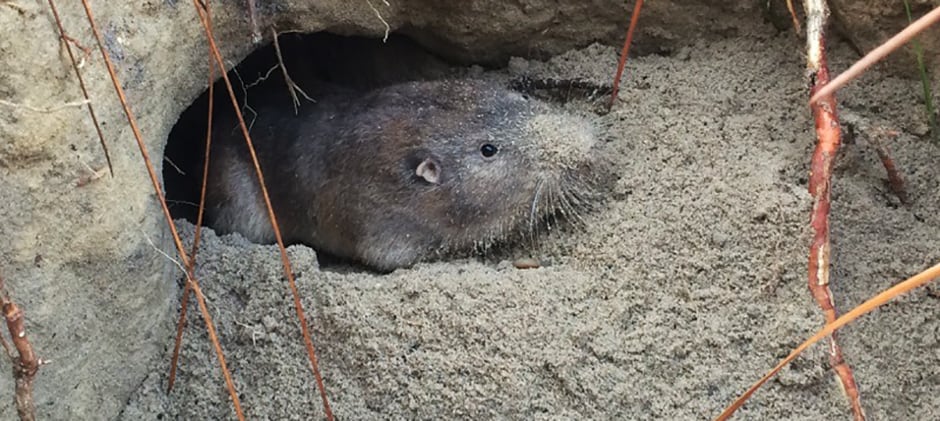Share this article
WSB: Researchers capture pocket gophers by the bucket
Southeastern pocket gophers (Geomys pinetis) typically live in sandy soils with early successional plants they feed on in longleaf pine ecosystems in the Southeastern coastal plains. The make their homes in extensive underground systems — one study even found a burrow system that extended over 500 feet.

By using a bucket, researchers created a simple but effective — and safe — trapping technique. ©NM Moore
The gophers themselves are fairly secretive, rarely coming above ground other than for brief foraging spells, but their tunnels are apparent due to the mounds of soil the gophers leave near the entrances.
Trying to trap them, Sarah Duncan discovered, is not easy.
A postdoctoral researcher in wildlife ecology at the University of Florida and a co-author of a study published recently in Wildlife Society Bulletin, Duncan was involved in a larger project examining the genetics, distribution and other facets of pocket gopher ecology in the state.
In order to capture them, researchers previously used a trap constructed from hardware cloth with a trigger door set within the gophers’ tunnel system. But the traps didn’t work very well due to the rodents’ fear of predators like corn snakes (Pantherophis guttatus) that sneak into their tunnels.
The gophers would work to plug these passages with soil to get rid of possible hiding places for snakes — evading researchers’ traps in the process.
“They push a lot of soil into the trap before actually going into the trap,” Duncan said.
She and her co-authors developed a new strategy. They created a trap made with a PVC pipe sloped at a 45-degree angle. The trap fits into the tunnel and has a pitfall to a plastic bucket. The idea was that the gophers would go into the passage to investigate and fall into the trap before they could start plugging it with soil.
“Hopefully they would make a mistake and fall into the bucket,” Duncan said.

The traps are buried under the ground and connected to the main tunnel system via a side passage. ©NM Moore
They found the traps were much more successful than previous strategies, and they had the added bonus of not injuring the animals, which sometimes occurs with the spring-loaded versions, reducing the amount of time researchers need to spend monitoring the sites.
“Prior to using this bucket trap, we weren’t comfortable leaving traps overnight,” Duncan said.
Trapping the gophers is important as it is a first step in understanding more about this cryptic animal in general, she said. Trapped animals are already teaching researchers more about genetics, and early results show a lot of genetic divergence between some populations — so much that other studies have suggested there may be two distinct species or subspecies divided by the Apalachicola River.
The gophers are also in decline, though the factors causing this population reduction aren’t very well understood. Duncan hopes that improved pocket gopher trapping will help conservationists understand better how to protect these animals.
This article features research that was published in a TWS peer-reviewed journal. Individual online access to all TWS journal articles is a benefit of membership. Join TWS now to read the latest in wildlife research.
Header Image: Due to their cryptic nature, pocket gophers can be hard for researchers to trap. ©NM Moore








